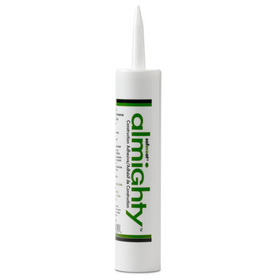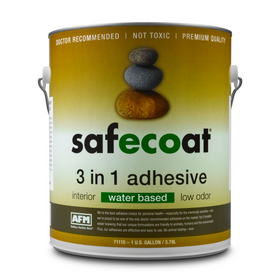
Is Vinyl Siding Sustainable?
Last Updated: Mar 20, 2025Whether you’re building a new house, adding onto an existing structure, or renovating an older home, curb appeal is a big deal. A house that visually looks nice often sells for a higher price than the same house in need of external TLC. Even though we shouldn’t judge a book by its cover, many people feel happier coming home to a house that’s easy on the eyes.
There are many options for a home’s exterior cladding. Vinyl siding continues to be the preferred choice for one-third of households in the United States, according to the U.S. Census Bureau. At Rise, we care deeply about the sustainability of our options for the long-term health of our loved ones and the planet. There’s no argument that vinyl siding is popular, but is it sustainable?
Table of Contents
- What is Vinyl Siding?
- When Was Vinyl Siding Invented?
- Is Vinyl Siding Popular?
- Is Vinyl Siding Sustainable?
- Is Vinyl Siding Bad?
- Installing Vinyl Siding
- How Much Does Vinyl Siding Cost?
- How Does Vinyl Siding Hold Up to Weather?
- Is Vinyl Siding Good?
What is Vinyl Siding?
Vinyl siding is a durable plastic siding used both for aesthetics and weatherproofing and made of polyvinyl chloride (PVC). It is available in various shapes and sizes and regularly mimics that wood grain appearance allowing it to look like painted clapboard or shingle siding. Vinyl siding is most commonly installed horizontally with long, interlocking strips. It's a popular choice because it's affordable, durable, and requires little maintenance.
When Was Vinyl Siding Invented?
Vinyl siding originated in the 1950s as an alternative to popular aluminum siding, prone to dings and dents from even minor windstorms.
Is Vinyl Siding Popular?
Vinyl siding didn’t take off right away, as homeowners were wary of the new plastic material. Early versions were poorly made and subject to cracking, sagging, fading, and buckling. Manufacturers saw these imperfections and quickly created more durable versions of the siding that greatly impacted builders’ preferences in using the inexpensive and incredibly versatile product. Since the early 1990s, vinyl has been the most popular siding option for existing and newly-built houses in the United States.

Most other siding options require staining, painting, and refinishing, but vinyl is manufactured in more than 350 unique colors and textures to instantly transform any house's look. Vinyl siding can be purchased in varieties that look like natural wood and even pieces with decorative edges already cut to match any home style.
In the 1970s, best practices were established for vinyl siding to bypass regular landfill disposal through a regrinding process. The process grinds down the old vinyl siding and melts it to create brand new siding.
Vinyl siding is “covered by the American Society of Testing and Materials (ASTM) Standard 3679” and available with standard warranties of 50 years. Before selecting your siding, check those warranties for options that may extend to the product's lifetime and additional features, like anti-weathering protection.
Is Vinyl Siding Sustainable?
In general, vinyl has a reputation for being a cheap material terrible for the environment, from the cradle to the grave. So we need to answer the question: is vinyl siding a sustainable solution for your home building or renovation project? As with many building materials, the simple answer is yes, and no.
Vinyl siding still rates highly in sustainability, manufacturing, and potential fire aside. In a life cycle assessment, this siding option outperforms every other cladding except cedar. It will even help your home attain points in the 2012 ICC-700 National Green Building Standard. It also satisfies requirements in the International Green Construction Code, the California Green Construction Code, and supports certification through LEED.
The manufacturing process of vinyl siding requires far less water, fuel, and energy than what’s needed to produce fiber cement, brick, and mortar. And, because vinyl can easily be reground and reformed, there is very little waste involved. These are all great points in an economy ever dependent on reducing consumption!
Vinyl siding scores points in sustainability in its incredible ability to be reused and recycled. If you replace old vinyl siding that’s not warped or cracked, siding can be sustainably deconstructed. Each piece could be reused on home projects like sheds and carports or taken to a construction reuse center for other homeowners to use.
Is Vinyl Siding Bad?
Vinyl contains dioxin, a carcinogen the Environmental Protection Agency (EPA) has linked to hormone disruption. Some siding may also contain lead as a stabilizing agency. While these may not pose an immediate health concern, any heat applied to the siding can quickly create a devastating reaction. Even a small house fire or heat off-put by power tools can release those toxins into the air. These effects have been evident in residents living near vinyl manufacturing centers where cancer, neurological damage, congenital disabilities, lung, and kidney disease are prevalent. If vinyl siding does find its way to a landfill, those toxins can quickly pollute soil and groundwater, stretching the impact even further.

Even old cracked and broken siding can be recycled. Vinyl siding is a durable thermoplastic that is designed specifically for its ability to be recycled. According to Richard Krock, Vice President of Regulatory and Technical Affairs at The Vinyl Institute, “Thermoplastic can be formed into a part or object and ground and re-formed. In our facilities, materials that are manufactured out of spec do not get scrapped. They are put into our regrind.”
Since 2014, there has been a 40% increase in manufacturers creating new vinyl siding from post-consumer manufactured vinyl, further increasing the plastic product's lifecycle and contributing to the circular economy.
Installing Vinyl Siding
One of the top reasons vinyl siding is preferred in new home construction is how quick and easy it is to install. Because each piece of siding weighs so little, an entire two-story home can be sided in just two to four days.

While vinyl siding can be self-installed, we recommend installation by an experienced professional. This will enhance its life and protect it against weather damage.
The best time to install vinyl siding is fall and early winter. The temperatures are moderate, and installers can properly account for expansion and contraction with seasonal weather changes. Because a standard piece of vinyl siding is subject to expansion by as much as 5/8 of an inch, installing when temperatures dip below 40 degrees can significantly increase the chances of buckling or cracking.
How Much Does Vinyl Siding Cost?
Vinyl siding is a very affordable material that can completely transform any home within just a few days. On average, vinyl is 11% cheaper than cedar siding and a whopping 26% less expensive than aluminum.
While it ranges in price for more durable options and those with unique finishes, most vinyl siding ranges from $3 to $8 per square foot. An entire two-story house can be sided in vinyl for as little as $8,000, topping out at about $20,000—while brick can cost more than $30,000.
You’ll also save considerably on installation costs, as vinyl siding is quicker and easier to install. While vinyl siding may increase a traditional tract home's value, it can devalue a historic home if the house predates 1950.
How Does Vinyl Siding Hold Up to Weather?
Vinyl siding is a popular choice for homes in temperate regions like California, Texas, and Florida, where the weather doesn’t dip below freezing often. Sustained temperatures below 40 can cause the siding to become brittle and subject to cracking.
And, while the siding will expand in the heat, hot summers won’t pose a problem, so long as the siding is installed correctly. If you must install in the heat of summer, hire a professional who knows not to nail the panels down too tight, where they could become subject to buckling as temperatures decrease.
Vinyl siding professionally installed can easily withstand wind speeds up to 110 mph. Be sure your installer is well versed in vinyl installation, as improper installation can quickly lead to blow-offs.
Rain will slide right down the vinyl panels, protecting your home's insulation, and because vinyl is a plastic product, vinyl siding is rot resistant. As a result, vinyl siding can be safely pressure washed for quick and easy summer spruce up that will leave your home looking brand new.
Is Vinyl Siding Good?
If you live in a mild climate, it's a reliable option, are on a budget, but want to achieve a beautiful exterior with curb appeal. Where sustainability is concerned, the lifetime of vinyl siding does outweigh less sustainable options like cedar siding. However, you do pay in the toxins used to manufacture and strengthen the building material. Therefore, you must weigh your sustainability, durability, and cost options to determine if vinyl siding is the right choice for your home project.
Laura Bourland
Laura grew up in the California suburbs, far removed from environmentalism, but nature always has a way. She uprooted her life in 2015, moving to the countryside of Washington to live a more sustainable and simple life on 12 acres. She and her fiancee are learning on the job as they attempt everything from gardening and natural pest control to eco-friendly building and home improvement.










